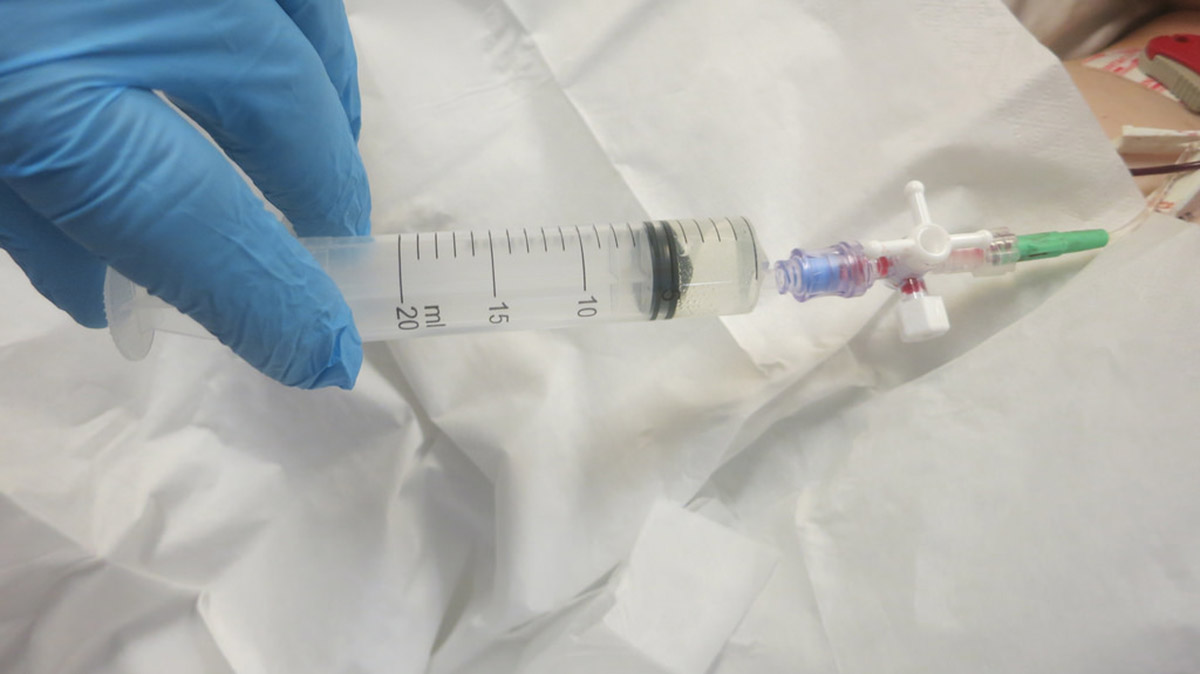Table of Contents
Compared to the usual strategies for treating arthritis that only provide pain relief, PRP treatment aims at repairing the damage. Osteoarthritis patients have reported improvement in knee pain, joint stiffness and function after PRP treatment. PRP has found to increase hyaluronic acid secretion and restrained pathways involved in pathogenesis of osteoarthritis ie inhibition of collagen 2 production. Studies revealed that interleukin IL-6 levels were increased by PRP treatment.

IL-6 is an immune modulator and plays role in tissue regeneration. Decrease in level of growth factors was observed after treatment, which indicates improvement in joint condition. This treatment has been found to increase cell proliferation at the site of injection as it is more of "cocktail of growth factors" that are strong mediators of tissue repair.
Patient’s own platelets are injected at the site of injury. It also has advantage over non-steroidal anti-inflammatory drugs normally used to provide the pain relief. These drugs alleviate pain for a short period of time and their excessive use over long time may have potential adverse effects on the body. PRP initiates multiple regenerative and anabolic processes as well as angiogenesis (stimulation of blood cell production) for tissue repair. PRP treatment was found to have better results in restoring function and relieving pain of joints as compared to hyaluronic acid and corticosteroid injections. These commonly used treatments were found to cause structural changes in tendons.
Limitations Of PRP-Treatment
PRP treatment is not yet sufficiently studied. Most studies were done with a small number of patients and the results are therefore not sufficiently confirmed by clinical trials. Many findings were not explained and need further investigation. For example, it is not clear why the expression of IL-6 is decreased after PRP treatment. Moreover, efficiency of this treatment is not validated yet and no methods or protocols have been yet defined for patients' rehabilitation after PRP injection.
The general assumption is that physical therapy can facilitate patient recovery after the procedure. Whether PRP treatment decreases the osteoarthritis progression is another question which hasn’t been answered as yet. Effectiveness of the treatment has not been fully established as there are few comparative studies. Results of these studies are sometimes contradictory. Nonetheless, many patients have reported pain relief for at least short period of time after PRP injection. Adverse events like headache, nausea, sweating, tachycardia etc. have also been reported by some patients. A study conducted in 2011 has revealed that better results for PRP treatment were observed in active and young patients, while condition worsened for older patients with more degenerated joint.
See Also: Hyaluronic Acid And Prophylaxis Of Arthritis Complications
Combination of PRP with other growth factors and stem cells is expected to have better potential for healing. Injection of leukocytes may also show good results due to their antimicrobial activity and high growth factors content. At present, further investigations are required to address many of the above mentioned issues and finally adopt platelet –rich plasma treatment for arthritis in clinics. Data collection from patients taking injections for multiple times can be useful to this end.
- AKEDA, K., AN, H. S., OKUMA, M., ATTAWIA, M., MIYAMOTO, K., THONAR, E. J.-M. A., LENZ, M. E., SAH, R. L. & MASUDA, K. (2006) Platelet-rich plasma stimulates porcine articular chondrocyte proliferation and matrix biosynthesis. Osteoarthritis and Cartilage, 14, 1272-1280
- ANITUA, E., SÁNCHEZ, M., NURDEN, A. T., ZALDUENDO, M. M., DE LA FUENTE, M., AZOFRA, J. & ANDÍA, I. (2007) Platelet-released growth factors enhance the secretion of hyaluronic acid and induce hepatocyte growth factor production by synovial fibroblasts from arthritic patients. Rheumatology, 46, 1769-1772
- GAWAZ, M. (2001) Blood Platelets, Germany, Georg Thieme Verlag
- HALPERN, B., CHAUDHURY, S., RODEO, S. A., HAYTER, C., BOGNER, E., POTTER, H. G. & NGUYEN, J. (2013) Clinical and MRI Outcomes After Platelet-Rich Plasma Treatment for Knee Osteoarthritis. Clinical Journal of Sport Medicine, 23, 238-239
- HUNDER, G. G. (2006) Mayo Clinic On Arthritis, Orient Paperbacks
- KON, E., MANDELBAUM, B., BUDA, R., FILARDO, G., DELCOGLIANO, M., TIMONCINI, A., FORNASARI, P. M., GIANNINI, S. & MARCACCI, M. (2011) Platelet-Rich Plasma Intra-Articular Injection Versus Hyaluronic Acid Viscosupplementation as Treatments for Cartilage Pathology: From Early Degeneration to Osteoarthritis. Arthroscopy, 27, 1490-1501
- LIPPROSS, S., MOELLER, B., HAAS, H., TOHIDNEZHAD, M., STEUBESAND, N., WRUCK, C. J., KURZ, B., SEEKAMP, A., PUFE, T. & VAROGA, D. (2011) Intraarticular Injection of Platelet-Rich Plasma Reduces Inflammation in a Pig Model of Rheumatoid Arthritis of the Knee Joint. Arthritis and Rheumatism, 63, 3344–3353
- MUNDY, L. (2013) Platelet-rich plasma for the treatment of knee osteoarthritis. Health Policy Advisory Committee on Technology: Technology Brief. Queensland
- SANCHEZ, M., GUADILLA, J., FIZ, N. S. & ANDIA, I. (2012) Ultrasound-guided platelet-rich plasma injections for the treatment of osteoarthritis of the hip. Rheumatology 51, 144-150
- SAMPSON, S., GERHARDT, M. & MANDELBAUM, B. (2008) Platelet rich plasma injection grafts for musculoskeletal injuries: a review. Curr Rev Musculoskeletal Medicine, 1, 165-174.Photo courtesy of Handarmdoc via Flickr: www.flickr.com/photos/handarmdoc/9212534322
- Photo courtesy of JLcampbell104 via Flickr: www.flickr.com/photos/104346167@N06/15423656936


Your thoughts on this